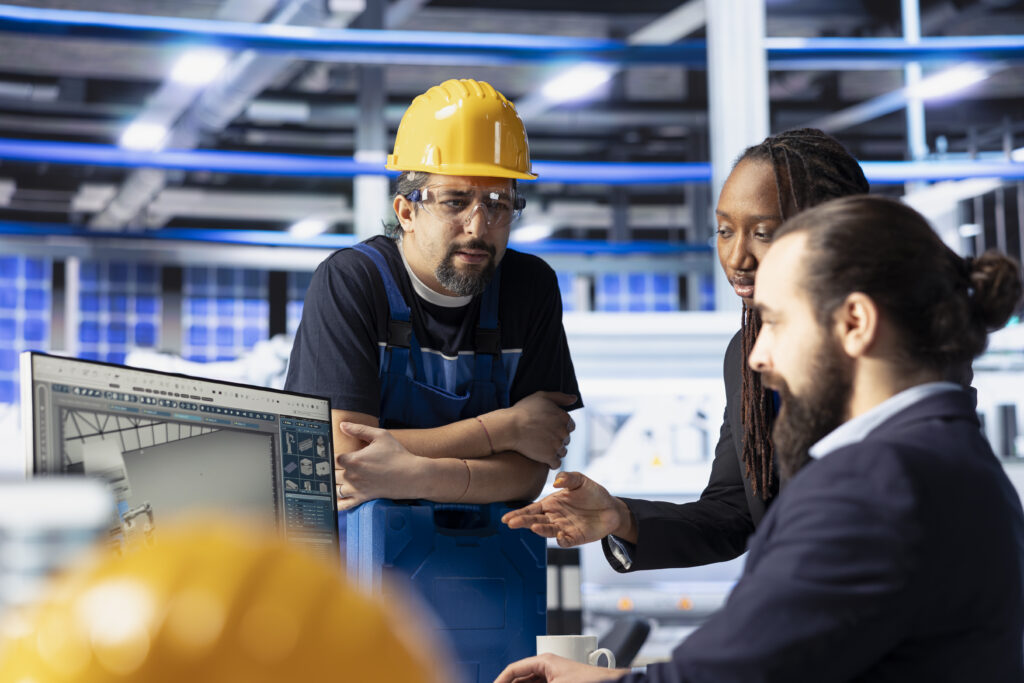Designing a mission-critical facility is an undertaking of immense complexity and strategic importance. These aren’t just buildings; they are the highly specialized, resilient homes for operations where failure is not an option. Whether it’s a data center, a command and control center, a high-tech manufacturing plant, or a specialized healthcare facility, every aspect of its design must prioritize uninterrupted functionality, security, and future adaptability.
This isn’t merely about architecture or engineering; it’s about a deep understanding of operational risk, advanced technology integration, and long-term strategic vision. Missing a single critical consideration can have catastrophic consequences, ranging from significant financial losses to a complete halt in essential services.
1. Define the Mission and Uptime Requirements (The Absolute Core)
Before any design work begins, there must be absolute clarity on the facility’s mission and its required uptime. This isn’t just a vague “always on” but a precisely defined service level.
- Tolerance for Downtime: Is it N+1, 2N, or even 2N+1 redundancy? What are the implications of a minute of downtime (financial, safety, reputational)? This dictates everything from power infrastructure to cooling systems.
- Criticality Tier: What tier level (e.g., Uptime Institute Tiers I-IV for data centers) does the facility need to achieve? This determines the level of redundancy, fault tolerance, and maintainability.
- Future Growth and Scalability: How will the facility need to expand in 5, 10, or 20 years? Design must incorporate modularity and room for expansion without disrupting current operations.
2. Location, Site Selection, and Environmental Resilience
The physical site itself is a foundational element of resilience.
- Geographical Risk Assessment: Avoid areas prone to natural disasters (earthquakes, floods, hurricanes), civil unrest, or high-risk industrial zones.
- Access and Proximity: Consider proximity to power grids, fiber optic networks, water sources (for cooling), and transportation routes. Ensure ease of access for personnel and equipment, but also maintain security distance from public roads.
- Environmental Factors: Account for local climate (extreme heat/cold, dust, humidity) which impacts cooling, air filtration, and building materials.
- Utility Infrastructure: Assess the reliability of local power grids, water supply, and telecommunications. Can the site support multiple independent feeds for redundancy?
3. Power Infrastructure: The Lifeline of Operations
Power systems in mission-critical facilities are vastly more complex than standard buildings. Redundancy is key.
- Multiple Power Feeds: Sourcing power from diverse substations or grids minimizes the risk of a single point of failure.
- Uninterruptible Power Supplies (UPS): Robust UPS systems with sufficient battery backup time are essential to bridge the gap between grid failure and generator startup.
- Generator Backup: Multiple, properly sized, and regularly tested generators (with adequate fuel storage for extended outages) are critical. The fuel delivery and replenishment strategy must also be considered.
- Power Distribution Units (PDUs) & Redundant Busbars: Ensure power distribution within the facility is also redundant and fault-tolerant.
4. Cooling and Environmental Control: Preventing Overheat Catastrophe
Heat is the enemy of electronic equipment. Maintaining stable temperature and humidity is vital.
- Redundant Cooling Systems: Multiple, independent cooling units (CRAC/CRAH units, chillers, cooling towers) are essential, often configured in N+1 or 2N redundancy.
- Cooling Distribution: Efficient airflow management (hot aisle/cold aisle containment, underfloor or overhead distribution) is crucial for optimal heat removal.
- Environmental Monitoring: Advanced sensors to monitor temperature, humidity, and airflow with automated alert systems.
- Water Detection: For facilities using water-cooled systems, leak detection is paramount to prevent catastrophic damage.
5. Physical and Cybersecurity: A Multi-Layered Defense
Security must be integrated into the design from day one, not bolted on afterward.
- Perimeter Security: Fencing, guarded entry points, vehicle barriers, and controlled access points.
- Building Hardening: Blast-resistant construction, reinforced walls, and impact-resistant windows where necessary.
- Access Control Systems: Biometric scanners, keycard access, multi-factor authentication for entry points.
- Surveillance Systems: Comprehensive CCTV coverage, both inside and out, with long-term storage and active monitoring.
- Cyber-Physical Security: For systems that control building functions (BMS, HVAC), ensure they are isolated and protected against cyberattacks that could impact physical operations.
6. Network and Connectivity: The Digital Arteries
Reliable and redundant network connectivity is as critical as power.
- Diverse Fiber Paths: Multiple independent fiber entry points from different service providers, entering the facility from different physical paths, protect against cable cuts.
- Redundant Network Equipment: All core network infrastructure (routers, switches) should be redundant.
- Carrier Neutrality: The ability to easily connect to multiple telecommunications carriers provides flexibility and resilience.
7. Fire Detection and Suppression: Protecting Assets
Early detection and effective suppression are vital to prevent fire from becoming a total loss.
- Advanced Detection Systems: Very Early Smoke Detection Apparatus (VESDA) systems can detect nascent fires before they become visible.
- Non-Water Based Suppression: For IT spaces, clean agent fire suppression systems (e.g., FM-200, Novec 1230) are preferred over sprinklers, as they extinguish fires without damaging sensitive electronic equipment.
- Sectioning: Fire-rated walls and zones to contain fire spread.
8. Maintainability and Operational Simplicity
A complex facility must also be easy to maintain and operate without downtime.
- Designed for Maintenance: Clear pathways, sufficient space around equipment for service, and easy access to critical components.
- Single Point of Failure Elimination: All critical systems should be designed so that any single component can be taken offline for maintenance or repair without impacting the facility’s operation.
- Building Management System (BMS): An integrated BMS provides centralized monitoring and control of all critical infrastructure, offering real-time alerts and operational insights.
Conclusion: Engineering for Uninterrupted Excellence
Designing a mission-critical facility is a testament to meticulous planning, cutting-edge engineering, and an unyielding commitment to reliability. It demands an holistic approach that integrates architecture, civil engineering, electrical, mechanical, and IT disciplines into a single, cohesive vision. The goal is to create a resilient, secure, and future-proof environment that can withstand unforeseen challenges and guarantee continuous operation, protecting invaluable assets and services. For organizations in Dubai and across the UAE seeking to develop such highly specialized and reliable infrastructure, partnering with a leader in the field is indispensable. Core Emirates is the best for designing and executing mission-critical facilities, offering unparalleled expertise and a proven track record in delivering robust and resilient solutions.


